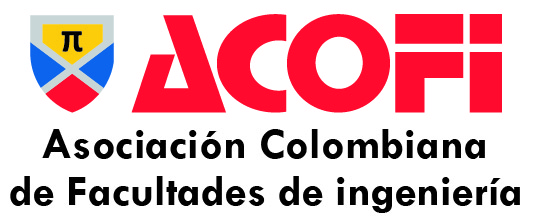The use of Iber as a learning aid of bidimensional flows in open channels
DOI:
https://doi.org/10.26507/rei.v16n31.1126Keywords:
teaching tool, hydraulic numerical modeling, digital labsAbstract
Visual examples and interactive graphs of controlled experiments allow the student to solve problems, demonstrate, measure, and do other practical and theoretical activities. Iber is a two-dimensional numerical model for simulating surface flow that combines modules of hydrodynamics, turbulence, sediment transport, and water quality, using the finite volume method to solve the corresponding equations. Its friendly interface for pre and post processing allows creating videos with results and displaying variables in 3D, making it a robust, free, relatively easy to use, practical and effective didactic teaching tool for hydraulic and hydrodynamic modeling. In this paper, we present some numerical examples of free surface flow simulation as complements to the experimental teaching practices that are difficult in many institutions due to lack of financial and human resources, or due to excessive assembly and operation time. The results show considerable time saved compared to the laborious and inevitable iterative calculations of the numerous equations involved; the versatility to enter, correct and visualize data is a great advantage to tabulate and present results during simulations of “real life” practices. The simulation times are also very reasonable and are associated with the type of problem, calculation method, numeric scheme, and obtained results, aspects that can be easily modified during class sessions.
Downloads
References
E. Bladé, L. Cea, G. Corestein, E. Escolano, J. Puertas y C. A. Vázquez-Cendón M.E., «Iber: herramienta de simulación numérica del flujo en ríos» Revista Internacional de Métodos Numéricos para Cálculo y Diseño en Ingeniería, vol. 30, nº 1, pp. 1-10, 2014. https://doi.org/10.1016/j.rimni.2012.07.004
L. Cea y M. E. Vázquez-Cendón, «Unstructured finite volume discretisation of bed friction and convective flux in solute transport models linked to the shallow water equations» Journal of Computational Physics, vol. 231, nº 8, pp. 3317-3339, 2012. https://doi.org/10.1016/j.jcp.2012.01.007
L. Cea, J. Puertas y M. E. Vázquez-Cendón, «Depth averaged modelling of turbulent shallow water flow with wet-dry fronts,» Archives of Computational Methods in Engineering, vol. 14, nº 3, pp. 303-341, 2007. https://doi.org/10.1007/s11831-007-9009-3
L. Cea Gómez, M. Bermúdez Pita y A. Brais Sobral, Cálculo de curvas de remanso y fenómenos locales con Iber, U. d. Coruña, Ed., Coruña, 2018, p. 89. https://doi.org/10.17979/spudc.9788497496834
L. Cea y E. Bladé, «A simple and efficient unstructured finite volume scheme for solving the shallow water equations in overland flow applications» Water resources research, vol. 51, nº 7, pp. 5464-5486, 2015. https://doi.org/10.1002/2014wr016547
I. Fraga, L. Cea, J. Puertas, J. Suárez, V. Jiménez y A. Jácome, «Global sensitivity and GLUE-based uncertainty analysis of a 2D-1D dual urban drainage model» Journal of Hydrologic Engineering, vol. 21, nº 5, mayo 2016. https://doi.org/10.1061/(asce)he.1943-5584.0001335
I. Fraga, L. Cea y J. Puertas, «Validation of a 1D-2D dual drainage model under unsteady part-full and surcharged sewer conditions» Urban Water Journal, vol. 14, nº 1, pp. 74-84, 2017. https://doi.org/10.1080/1573062x.2015.1057180
O. García-Feal, J. González-Cao, M. Gómez-Gesteira, L. Cea, J. M. Domínguez y A. Formella, «An accelerated tool for flood modelling based on Iber» Water, vol. 10, nº 10, p. 1459, 2018. https://doi.org/10.3390/w10101459
G. Muñoz y C. Kenyo, «Comparación de los modelos hidráulicos unidimensional (HEC-RAS) y bidimensional (IBER) en el análisis de rotura en presas de materiales sueltos; y aplicación a la presa Palo Redondo» 2014.
J. C. Rincón Ortiz, M. D. G. Pérez, C. Freitez y F. Martínez, «Análisis comparativo entre los modelos HEC-RAS e IBER en la evaluación hidráulica de puentes» Gaceta Técnica, vol. 17, nº 1, pp. 9-28, 2017.
L. Cea, M. Bermúdez, J. Puertas, E. Bladé, G. Corestein, E. Escolano, A. Conde, B. Bockelmann-Evans y R. Ahmadian, «IberWQ: new simulation tool for 2D water quality modelling in rivers and shallow estuaries» Journal of Hydroinformatics, vol. 18, nº 5, pp. 816-830, 2016. https://doi.org/10.2166/hydro.2016.235
O. Garcia-Feal, L. Cea, J. D. J. M. Gonzalez-Cao y M. Gomez-Gesteira, «IberWQ: A GPU Accelerated tool for 2D water quality modeling in rivers and estuaries» Water, vol. 12, nº 2, p. 413, 2020. https://doi.org/10.3390/w12020413
I. Fraga, L. Cea y J. Puertas, «Effect of rainfall uncertainty on the performance of physically based rainfall–runoff models» Hydrological Processes, vol. 33, nº 1, pp. 160-173, 2019. https://doi.org/10.1002/hyp.13319
Downloads
Published
How to Cite
Issue
Section
License
Total or partial reproduction of the documents published in the journal is authorized only when the source and author are cited.
| Article metrics | |
|---|---|
| Abstract views | |
| Galley vies | |
| PDF Views | |
| HTML views | |
| Other views | |









